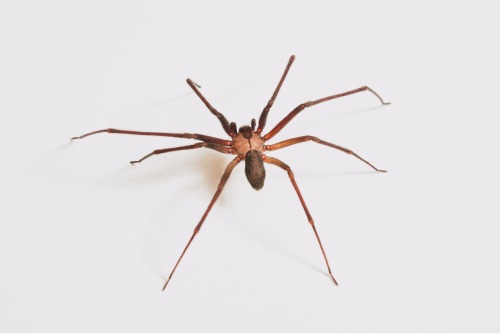Spider Control Management
Spiders are arachnids, not actually insects. True insects (such as ants, roaches, and wasps). Spider have long legs, spiders keep their bellies well above the ground. spiders don't routinely use their mouth parts to clean themselves most spiders spend their entire lives sitting in webs (a non-treated surface).
Spiders are prevalent at wall / ceiling and wall / wall junctions. Certain species of spiders are highly venomous and may even produce a lethal bite. All spiders produce venom that is poisonous to their normal prey of insects, mites and other small arthropods. Venom is injected through the hollow fangs to immobilize the prey. They build webs, which are unsightly and gather dust. They can contaminate product.
This treatment is carried out in the form of spray /misting of the areas infested by spider’s upto safely accessible heights. For production area, the treatment will be confined as spot / controlled spray. This spray will be aimed at specific locations and not as broadcast to avoid unnecessary contamination. Cracks and crevices will be treated. The cobwebs have to be removed prior to our treatment by the client to avoid staining of the walls due to the cobweb dust. In sensitive non spray areas such as production in sensitive industries the cobwebs should be removed by mechanical control means such as use of vacuum cleaner upto safe accessible limits.
The frequency recommended is monthly however based on the type of premises and the level of infestation the frequency can be increased. This involves shut down of premises during spray operations and moving the products / work in progress material away from the floor to avoid contamination. The products should be kept under cover by the clients during our treatment.
As required will be maintained with details of the chemicals used and areas with date & time of treatment and client signature etc. Inspection card/Progress report (IC/PC) will be generally used in most of the cases. However specially designed log sheets will also be used in some cases depending on the type of client.
Sanitation is critical in successful spider control. Collect and destroy spider webs, egg sacs and spiders with a strong suction vacuum cleaner with proper attachments to reach the necessary places. Use a dust mop, stiff broom and dustpan when needed to help discourage establishment, Eliminate pests (prey) such as flies, ants, and cockroaches, which attract spiders. Excess moisture and humidity should be controlled. Seal cracks and crevices around the windows and doors and install tight fitting screens as needed where spiders can enter from outdoors. Use yellow or sodium vapour light bulbs at outside entrances to reduce night flying insects ( prey), which attracts spiders.
Spider control needs to be a "contact kill."by direct spray. We used pesticide spray on the surface of a crack that a spider goes in and out of, (such as between a baseboard and the carpet, or a piece of wood trim around a window), the spider's body will likely contact the spray and the pesticide could be effective. Crack and crevice treatment with insecticides provide some control, use glue boards or sticky traps.
(A) Clean Corner Periodically of premises.
(B) Clean behind curtain area
